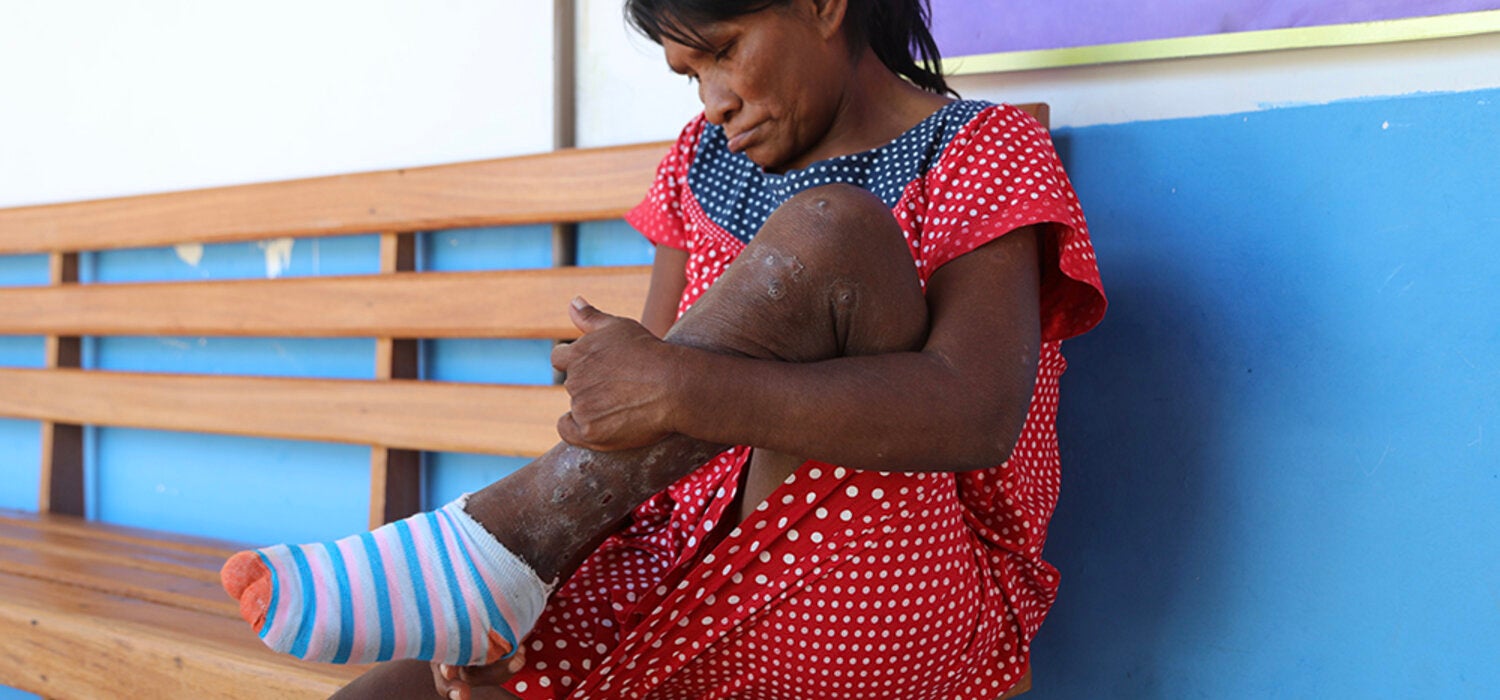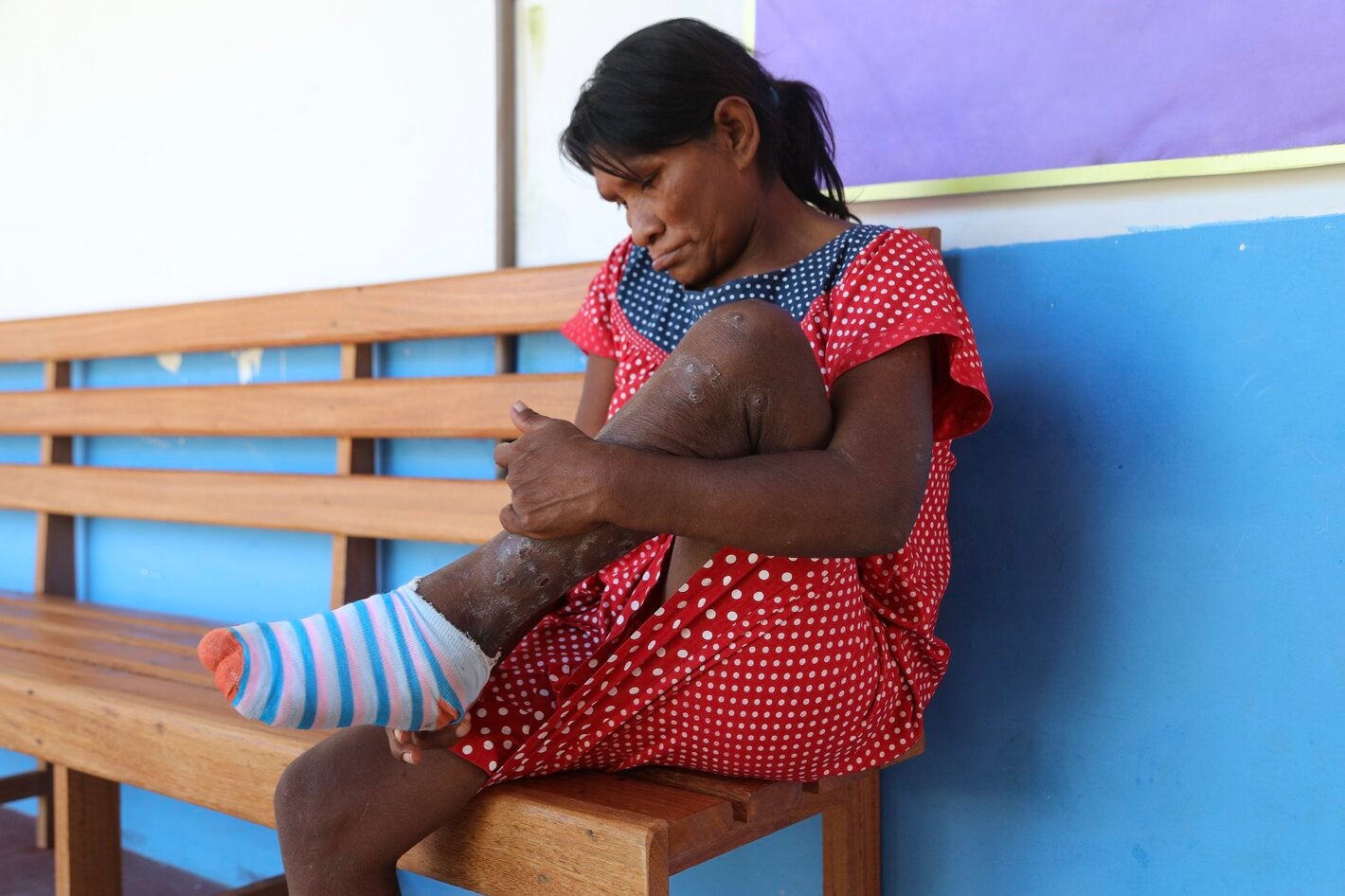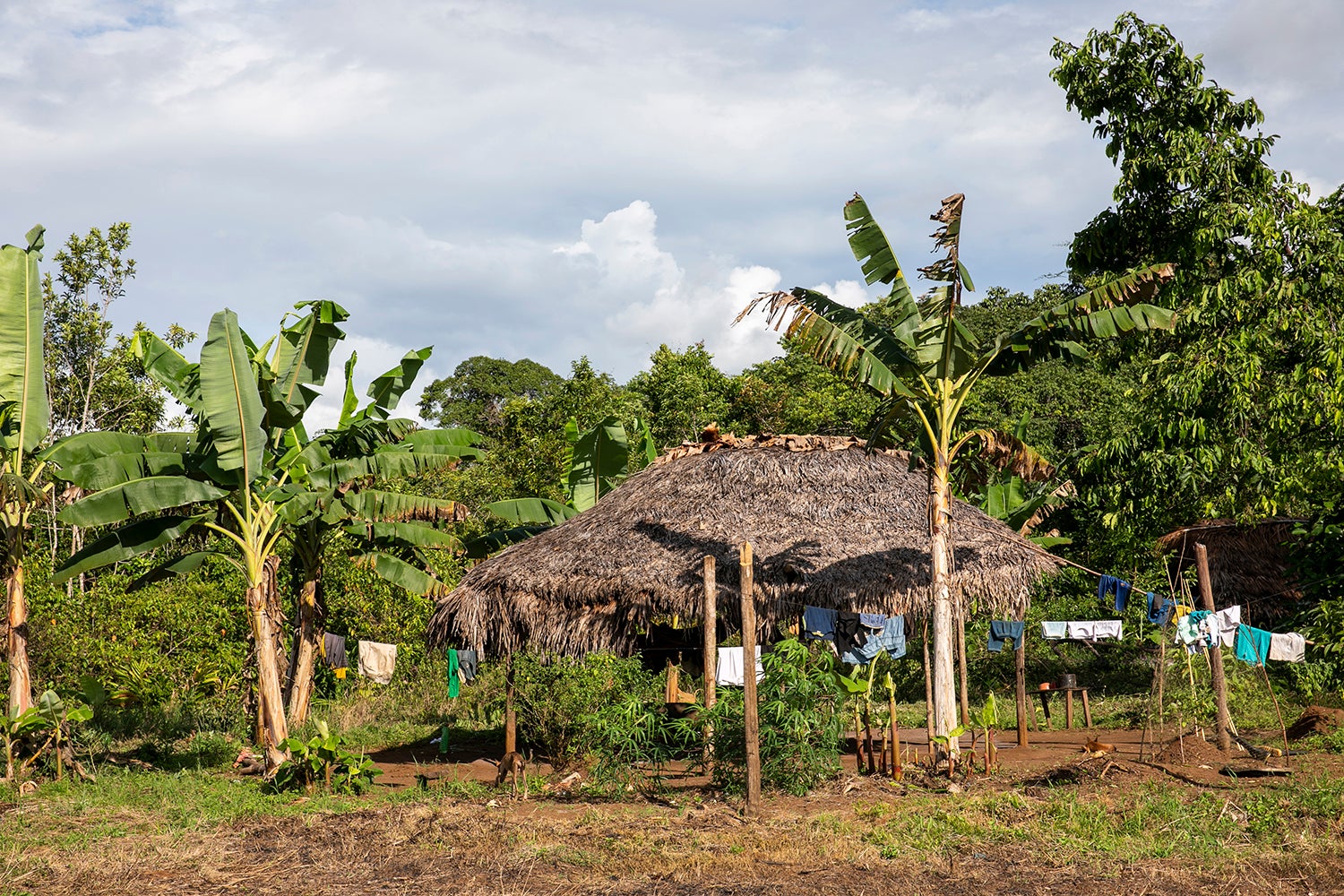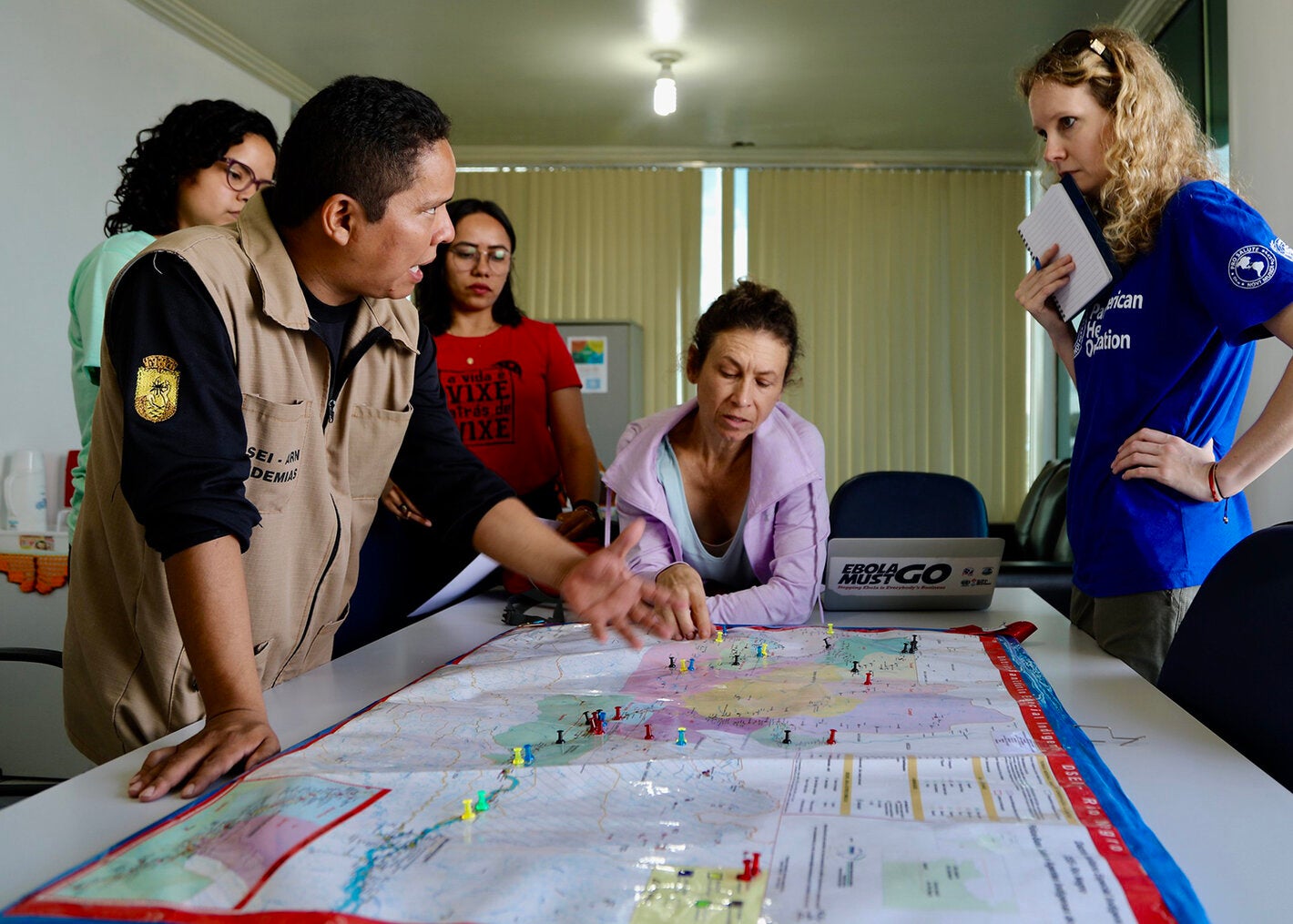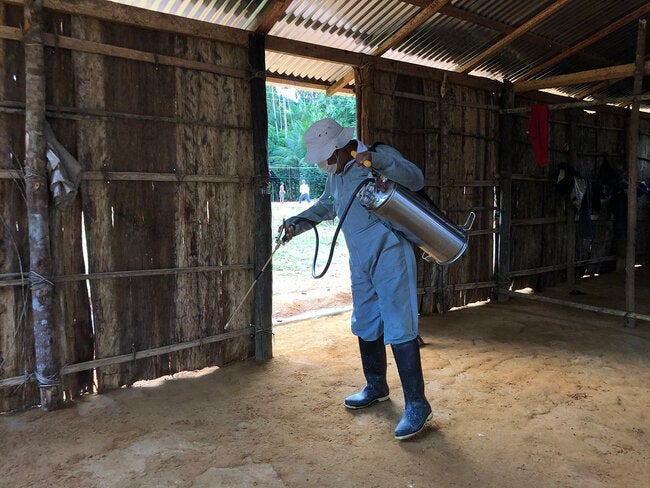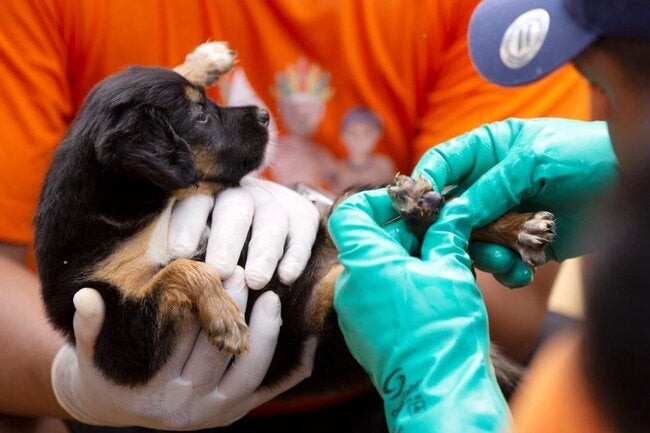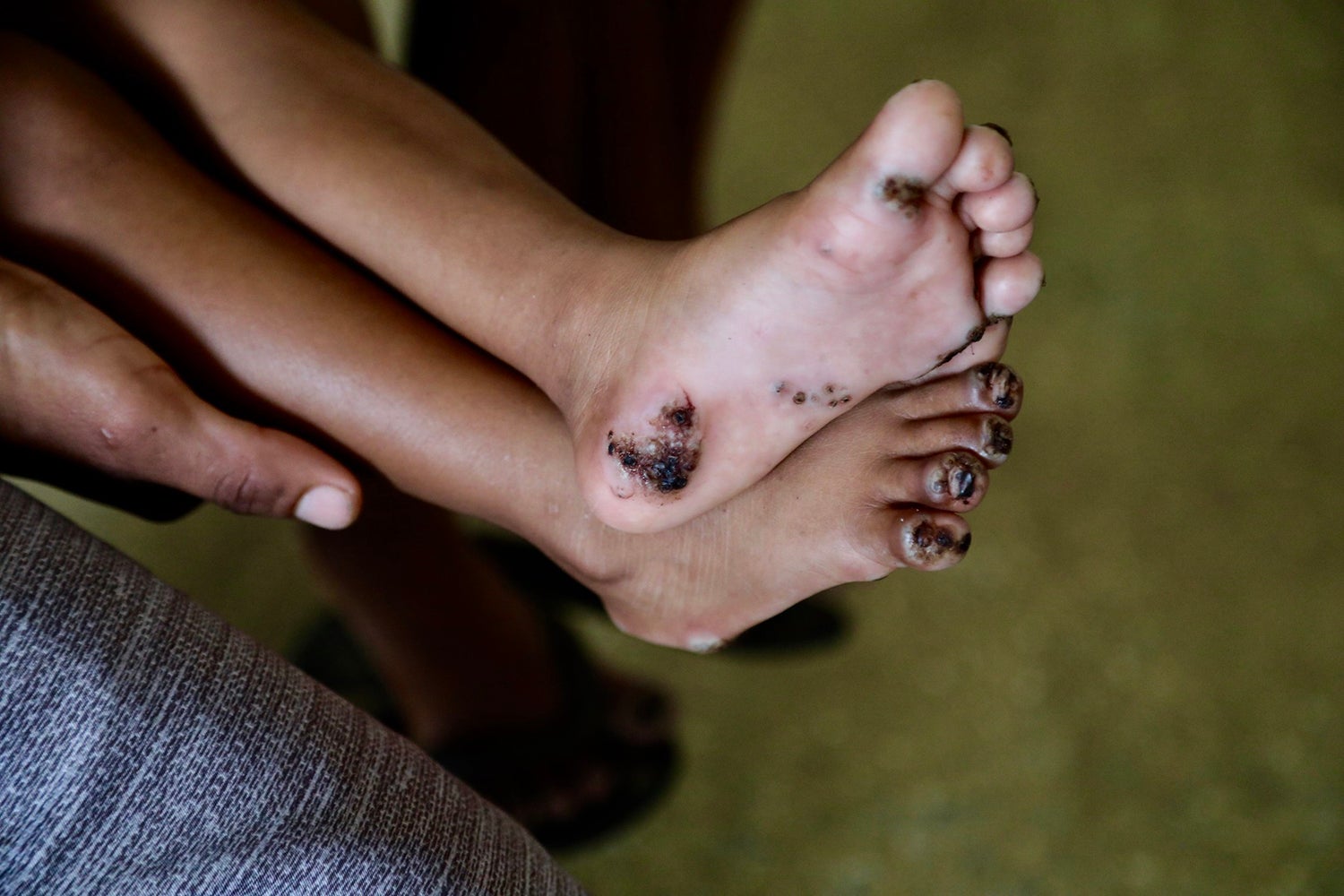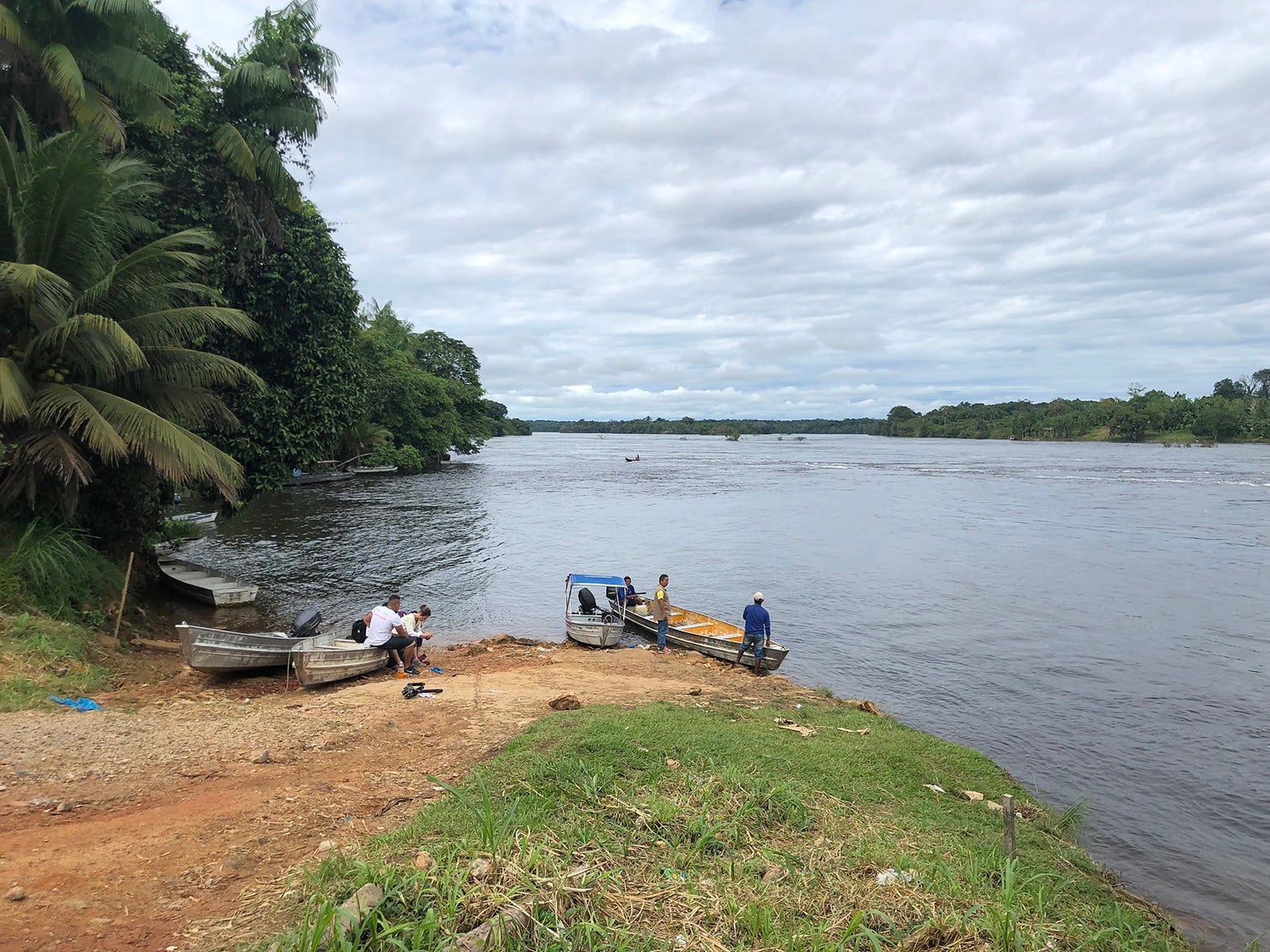Anita Barbosa believes she has been cursed. For the past four years, the elderly indigenous woman from Alto Rio Negro, deep in the Brazilian Amazon, has suggered from a severe case of tungiasis, a parasitic infestation caused by penetration of the female Tunga penetrans or Tunga trimamillata flea into the skin. The parasite causes painful, itchy lesions that, if left untreated, can limit mobility and paritcipation in daily activities. In severe cases, infestation can lead to complications including deformity and bacterial infections.
I do not have a husband or any children of my own so I have to do all the cooking, cleaning and planting myself, even though I’m in a lot of pain,” said Anita.ins a reality, including for the hardest to reach.”
Anita resides in an indigenous community whose inhabitants live in traditional houses with dirt floors. The community has close bonds with domestic animals, particularly dogs, which are used for hunting and can also host the disease. It is estimated that between 200 and 300 indigenous people in the Alto Rio Negro area have severe tungiasis. The majority of these are children and elderly people, who are particularly susceptible to infestation.
The Tumbira Project
The Tumbira Project, which is a collaboration between the Pan American Health Organization (PAHO), the Brazilian Indigenous Health Secretariat (SESAI), the Alto Rio Negro Indigenous Health District, and the Colombian Ministry of Health, aims to respond to the high number of severe cases of tungiasis, particularly among the Hupdah and Yuhupdeh indigenous populations.
“PAHO has played a leading role in the development and implementation of the Tumbira project since its inception last year,” said Dr. Isabel Roger, Regional Advisor for Leprosy at PAHO, and focal point for neglected disease in Brazil. “The Organization’s involvement has been key to ensuring that international experts are brought on board to design and support intervention strategy. This cross-collaboration is vital, particularly when working with frontier communities,” she added.
To rid a community of the disease, it is very important to break the transmission cycle, and to break the transmission cycle, we must treat the people infected, their homes and their animals."
Yago Ranniere Teixeira Santana, Technical Advisor for neglected diseases at SESAI.
In order to achieve this, the project focuses on training the multi-disciplinary health teams that provide primary health care in the region, to treat both infected people and animals, disinfect the dirt floors of homes, and ensure that communities are provided with information about transmission, and precautions that must be taken to avoid infection.
The impact of Tungiasis
“Tungiasis limits mobility and causes disability,” said Hollman Miller, an entomologist and epidemiologist from the Vaupes Health District in Colombia. “In an Amazon context, peoples’ nutrition is determined by their ability to go out into the jungle and harvest its food. This means that without treatment, older adults, who are often left to fend for themselves, can end up starving to death.”
For Miller, there is a big difference between the impact of this disease on populations in the Amazon versus urban populations, where people are looked after by their families and can be hospitalized if they need to receive treatment. “Here, the disease limits a person’s ability to eat and to carry on with their lives. It is much more serious,” he said.
Dr. Miller was invited to form part of the project in order to train the team on the integrated approach to tungiasis elimination that he has been implementing within indigenous communities in Colombia. This includes the use of Dimethicone, a silicone-based ointment that, when applied to the skin, prevents the flea from breathing. Not only can this treatment be carried out in the community, by health workers and community members, but it also prevents the need for manual extraction of the flea, which is painful and carries an additional risk of infection.
Anita was one of the first in the area to benefit from Dimethicone. Her tungiasis was so severe that she was transported to a center in São Gabriel da Cachoeira where she could be monitored and is now looking forward to returning to her village cured and pain-free.
Leaving no one behind.
For Josefa da Silva, the Coordinator of the Infections Disease Unit at DSEI (Ministry of Health’s Indigenous Health District), the barriers faced by indigenous health teams in the region are both cultural and geographical. “Not only do we have difficulties accessing communities, but we also need to be able to understand the local context,” she said, particularly when it comes to integrating western with traditional medicine, which often views tungiasis as a curse.
The location of indigenous communities also presents a significant barrier when it comes to eliminating communicable diseases, particularly those such as tungiasis that are not so widespread. Villages are isolated from big cities and from each other, making the provision of primary health care services difficult on a practical level, and also expensive.
“Tungiasis doesn’t seem as important as malaria or yellow fever or other diseases that cause mortality across large areas, so it doesn’t form part of international priorities,” said Dr. Hollman. “But if countries do not invest in prevention and control measures, the problem will only get worse for these populations,” he added.
For Dr. Roger, the elimination of neglected diseases, including tungiasis, requires a regional vision and collaboration between countries, particularly in parts of the Americas such as the Amazon, where indigenous populations occupy territories that stretch across national borders.
“Collaboration and coordination between countries of the region is the only way we will achieve elimination,” she highlighted. “The Tumbira project is a great example of what can be achieved if we join forces and work together to ensure that health for all remains a reality, including for the hardest to reach.”
Related Links

